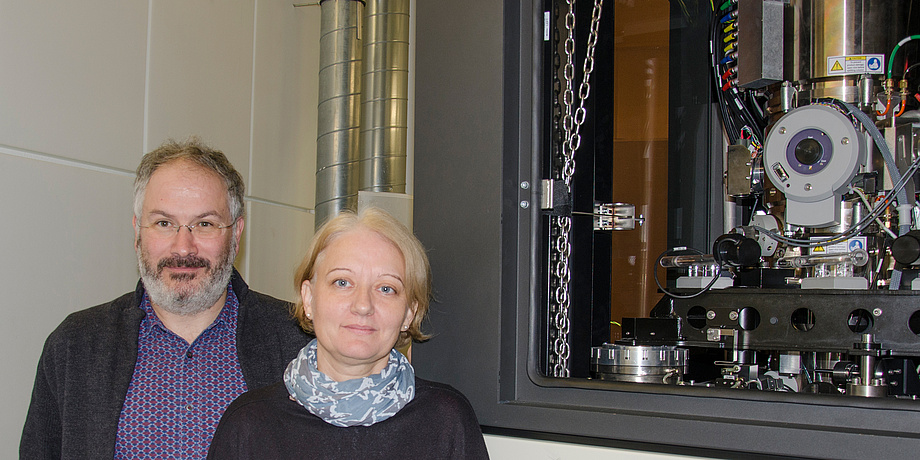Topological insulators are materials that insulate on the inside but conduct electric current on their surfaces. These properties make this class of materials particularly interesting for the electronics, semiconductor and computer industries. The insertion of magnetic dopant elements gives these materials an extra flavour. At the edges of the material they conduct currents loss-free, enabling signal transport without heating. In combination with superconductors, these materials could define the computing units for novel quantum computers.
In order to be able to use magnetically doped topological insulators for computing units in quantum computers, however, more knowledge about the atomic processes inside these materials is needed. For example, the quantized anomalous Hall effect, which is responsible for loss-free current transport, has so far only been observed at extremely low temperatures. According to theoretical calculations, however, it should also occur at much higher temperatures, which would be crucial for quantum computers to function at room temperature. Decisive for these effects is a magnetic energy gap within the material, the origin of which could now be determined by high-resolution analytical measurements.
Successful cross-institutional materials research
In experiments with manganese-doped bismuth telluride compounds (Bi2Te3), an international research consortium led by the Helmholtz Centre Berlin the Institute of Semiconductor and Solid State Physics at Johannes Kepler University Linz has now for the first time been able to detect and measure such magnetic energy gaps.
Austria's most powerful electron microscope ASTEM (Austrian Scanning Transmission Electron Microscope) played a central role in the discovery at the Austrian Centre for Electron Microscopy and Nanoanalysis (FELMI-ZFE) – a research network of the Austrian Centre for Electron Microscopy and Nanoanalysis of TU Graz and the Graz Centre for Electron Microscopy (ZFE), which operates under the umbrella of the Austrian Cooperative Research (ACR) organisation.
No doping disorder
The head of the working group for analytical transmission electron microscopy Gerald Kothleitner and Mihaela Albu, responsible for measurements at FELMI-ZFE, explain: "With the help of the ASTEM, we were able to observe self-organization phenomena in the materials treated. The starting material consists of five-part layers of tellurium and bismuth atoms. The introduction of manganese into the lattice structure suddenly results in seven-part layers. Where manganese has been introduced, the system creates an additional electron-neutral manganese tellurium layer." In this way, a superstructure is created – in a self-organized manner – that makes magnetic energy gaps possible.
Knowledge about these self-organizing processes could in the medium to long term lead to new materials, whose topological properties could be harnessed to make quantum computing more widely feasible.
About ASTEM
The ASTEM at the Graz Centre for Electron Microscopy was put into operation in 2011. The many analytical properties of the instrument provide scientists with detailed insights into the atomic level of any material: from metallic alloy systems and light metals to electroactive polymers, ceramics, composites and semiconductors. "Only when we understand what holds the world together inside can we understand how something on the outside works and can exploit it technologically," says Kothleitner, for whom electron microscopy today provides answers "to many technological questions of the future”.
Electron microscopy and nanoanalysis is anchored in the field of expertise "Advanced Materials Science“, one of the five strategic focal areas of TU Graz.
Original publication "Large magnetic gap at the Dirac point in Bi2Te3/MnBi2Te4 heterostructures" in Nature: https://doi.org/10.1038/s41586-019-1826-7

